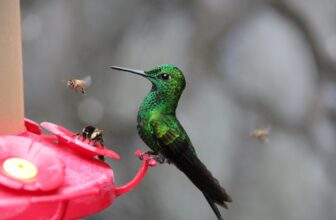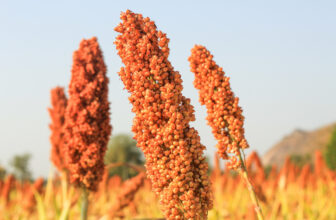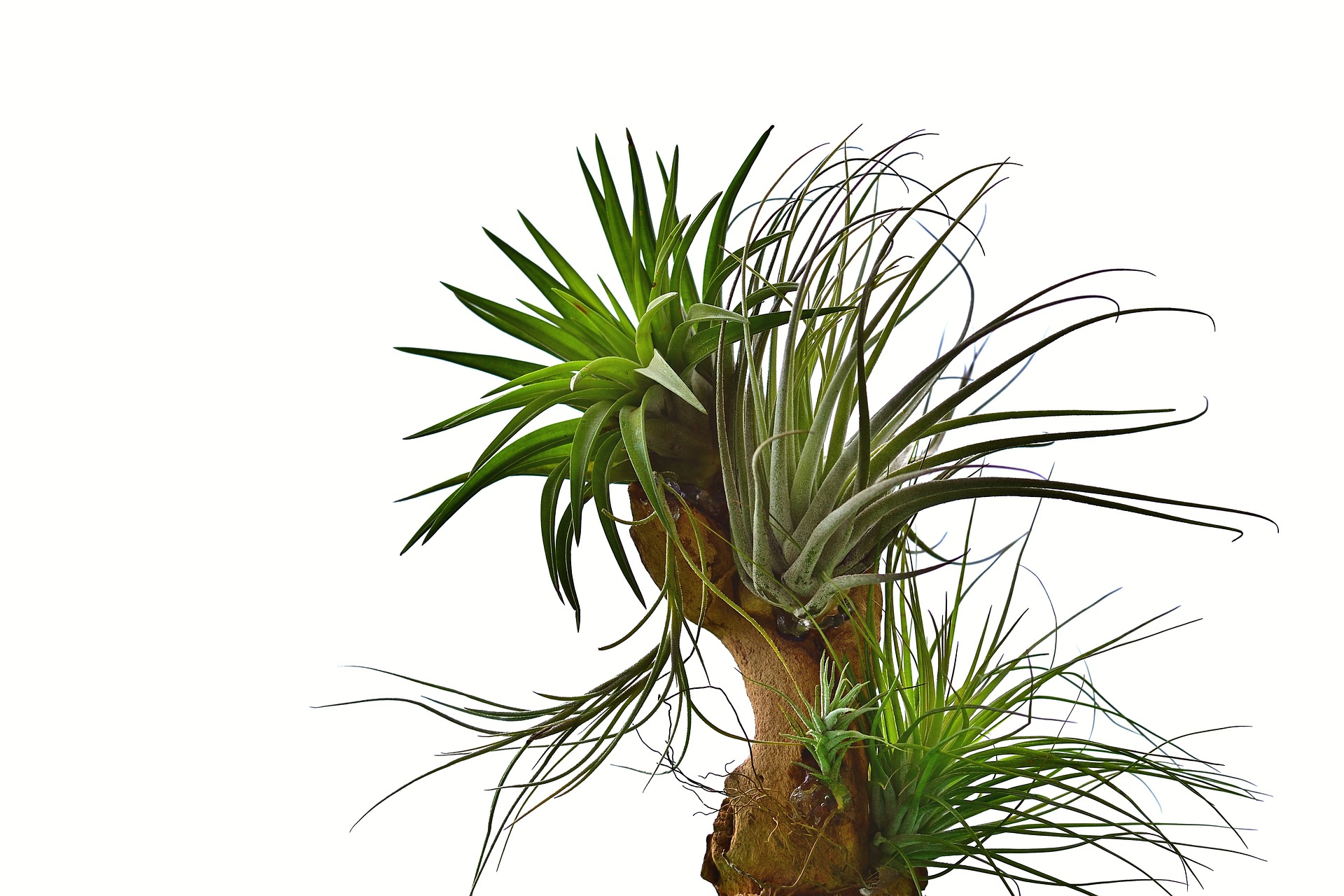
Table of Contents
Air plants are versatile plants that thrive by absorbing nutrients from their surroundings rather than from soil. They are low maintenance and grow vibrant and exotic-looking flowers, making them some of the best ornamental plants to be grown in homes and office workspaces.
If you’re looking for a feature plant to give some character to your living spaces, take a look at our list of the best air plants that might be the perfect addition you need.
About Air Plants
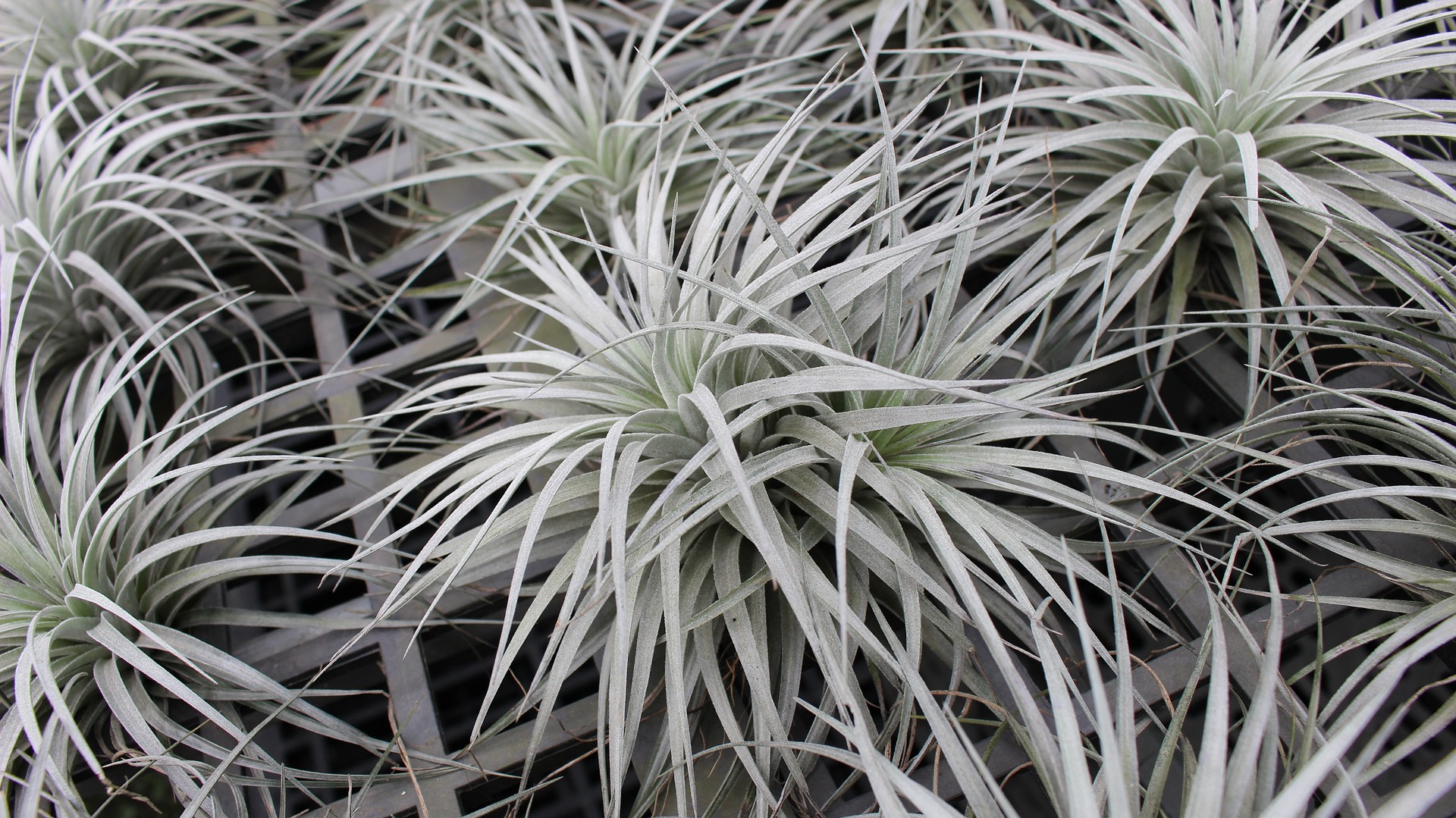
Air plants, botanically named Tillandsia, are epiphytes, where they cling to and grow on other plants or surfaces such as tree branches, trunks, and even rocks to gain physical support for growth. Unlike other plants, air plants are unusual as they don’t require soil. They get their nourishment from air, rain, water, and debris from the surfaces of the supporting plants. This makes it easier for you to decide where you would like to display your air plant as you’re not reliant on the soil.
The slender leaves of an air plant are strap-shaped, where the leaves are covered with specialized cells called trichomes that absorb moisture from the air and water gathered on its surface. Apart from this functional value, trichomes also give the plant a shiny, silvery, and frosted appearance making them popular decorative plants to be grown at homes.
Varieties of Air Plants
There is a wide variety of air plants that differ from one another based on leaf shape, colors, sizes, and whether or not they grow flowers. Here are some of the most popular types of air plants among gardeners and plant lovers.
Tillandsia Xerographica
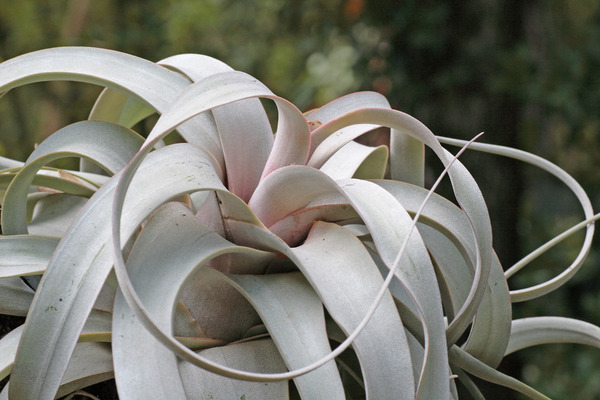
This unique and stunning air plant is one of the largest growing plants from the Tillandsia Xerographica species, reaching up to 3ft. The rosette of silvery, green-gray leaves widens from the base and tapers down to give a curly tip, giving it an attractive appearance, making these plants a great piece of artwork for home decor.
This plant is slow in growth but once flowered, the blooms are long-lasting. Xerographica tends to like bright and dry conditions, so place the plant in a place with bright but indirect sunlight. When watering the plant, misting is often a good method to help the plant thrive in its own habitat followed by a slight soak in water every 2 weeks depending on the levels of humidity.
Tillandsia Aeranthos
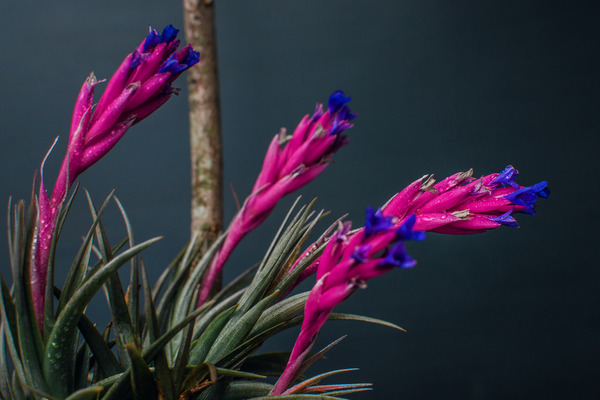
Tillandsia Aeranthos is a great plant if you are a beginner at air plants. The leaves are narrow, stiff, and sharp-tipped green leaves with colorful, pink, and purple blossoms that grow upwards to a cone-like shape. These bright-colored flowers bring out the artistic value of the plant.
When compared to other varieties, Aeranthos grow flowers very quickly, making them a great selection for decorators and gardeners who love to propagate. It’s also a larger homegrown air plant that grows to about 6 to 9 inches in height.
As with all air plants, Aeranthos requires very little maintenance. It thrives in mild climates with light watering or misting at least twice a week during summer and once a week during winter. Soak Aeranthos in water once every two weeks. An adequate amount of bright light is required to provide the optimum conditions for the plant.
Tillandsia Brachycaulos
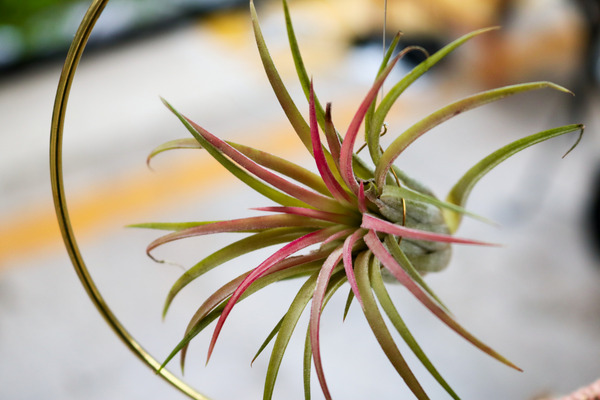
Brachycaulos is a well-known air plant for its unique growing patterns. Younger plants initially have deep green-colored rosettes which then blush to a vibrant pinkish-red color upon maturity and light intensity.
Once the plant begins to bloom, bright purple flowers appear to blossom from the center of the plant which makes it even more mystical. Even though they can grow in both low and high light intensities, faster growth and a much darker red appearance on the leaves can be seen with more light. Frequent misting of water is also required to prevent the plant from drying out.
Tillandsia Bulbosa
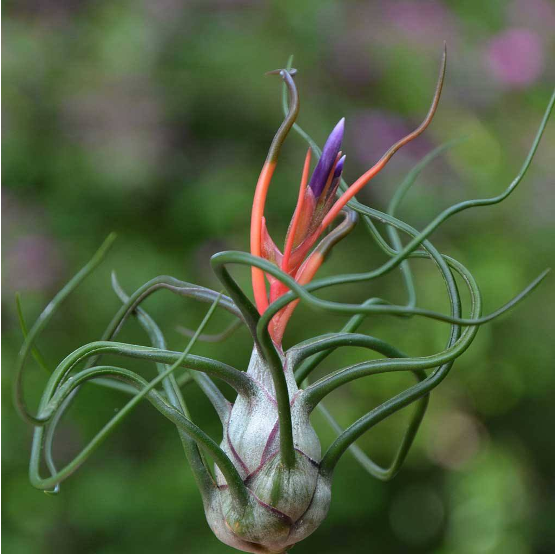
Bulbosa is a unique-looking air plant named after its bulb-like appearance at the base, with thin, long, green stalk-like leaves extending from the base almost like tentacles. Although the plant is prematurely green in color, the leaves turn reddish when the plant is about to bloom, growing stunning pink and purple tubular blossoms.
A mature Bulbosaplant can grow up to 4 – 7 inches in height and only blooms once in its lifetime. Bulbosa is adaptable to any light but most preferably, but indirect light is ideal. Not much watering is needed, and slight misting is all you will need to do. Bulbosas are very easy to maintain, therefore they’re most popular among beginners as it requires very little effort and care.
Tillandsia Cyanea
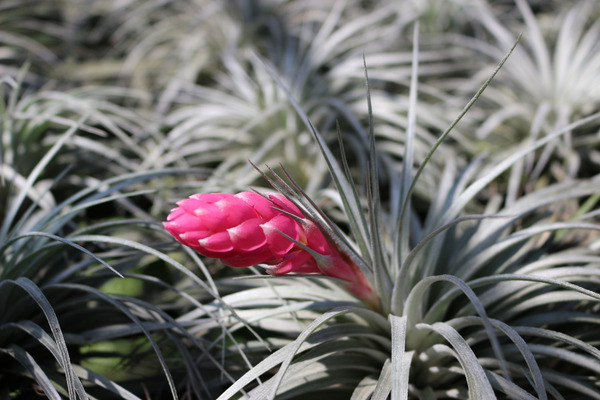
Tillandsia Cyanea, also known as Pink Quill, is a commonly grown colorful, decorative indoor plant that grows a vibrant pink, a quill-shaped flower that contrasts perfectly with the long, dark green, spikey leaves.
This variety grows to about 12 inches with leaves growing upright and can be placed in a pot or a vase for indoor and outdoor decorative purposes. One popular reason to plant this air plant is that its colorful bracts retain their show-stopping feature, the flower, for several months, therefore, making it eye-catching and attractive. Bright and indirect light is ideal to prolong their flowering period, with occasional misting of water.
How to Care for Air Plants
Air plants require very little care and maintenance which makes them a good plant option for busy plant lovers. However, a few factors need to be considered to maintain a healthy and long-lasting plant.
1. Light
Air plants thrive in bright, indirect light, where the plants should be kept near a natural light source during the day to receive most of the light but not in direct light as it may dehydrate and dry out the plant. Air plants can also survive under artificial light, but a longer exposure time is required.
2. Water
Air plants require little water. The quantity of water required, however, depends on the environment that the plants grow in; warmer and drier conditions will require more water whereas humid and cool conditions require less water.
Spraying or misting the air plants would be all they need to be hydrated however, a thorough water treatment might be needed at times. This can be done once or twice a week when the plant is soaked in water for about 10-15 minutes. After soaking, turn the plant upside down and allow the water to drain off. This step is crucial when soaking the plants as all the water needs to be completely dried off or else the plant will tend to rot with too much moisture.
3. Temperature
Mild temperatures, ideally between 50-90 F, are ideal for air plants. They thrive mostly in humid conditions which is a reason why many people love to place the plants on bathroom windowsills where slight shower mist can fall on the leaves.
FAQ’s about Air Plants
Air plants, also known as Tillandsia, are a type of epiphytic plant that do not require soil to grow. They absorb water and nutrients through their leaves from the air and can be grown on a variety of surfaces, such as rocks, shells, and driftwood.
Air plants need bright, indirect light and require regular misting or soaking in water to stay hydrated. They should be fertilized occasionally with a specialized air plant fertilizer.
Yes, air plants can be grown indoors as long as they receive adequate light and moisture. They are a popular choice for indoor gardening due to their unique appearance and low maintenance requirements.
Yes, air plants can bloom, and their flowers come in a variety of colors and shapes. Blooms can last several weeks and add to the plant’s aesthetic appeal.
Air plants can be mounted on a variety of surfaces, such as driftwood, rocks, or wire frames. They can be attached with glue or wire, or simply placed on the surface and secured with string or fishing line. It’s important to ensure that the mount allows for good air circulation around the plant.
Wrapping Up
Air plants come with vastly distinct features from most regular plants, which makes them valuable and special. They add character and style to your home or office space as a feature. As soil is not a requirement for these plants, the gardener has all the control in deciding where the plants can be placed, whether to hang them or place them on countertops.
Now that you know the best types of air plants for your home and how to care for them, it is totally up to your imagination to make your living space an aesthetically pleasing environment using air plants.




